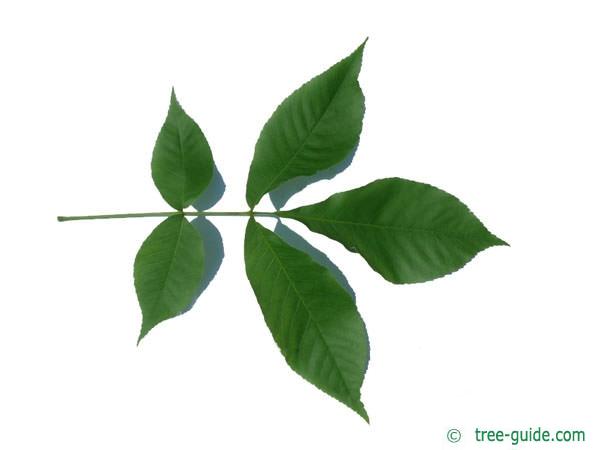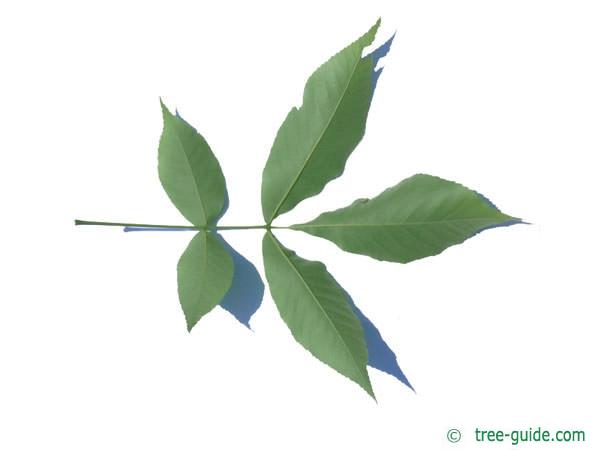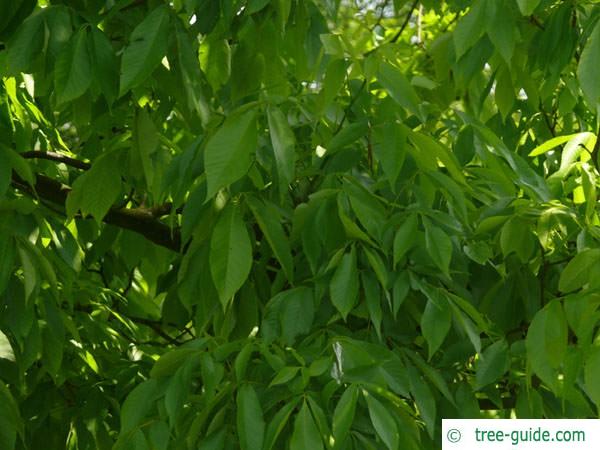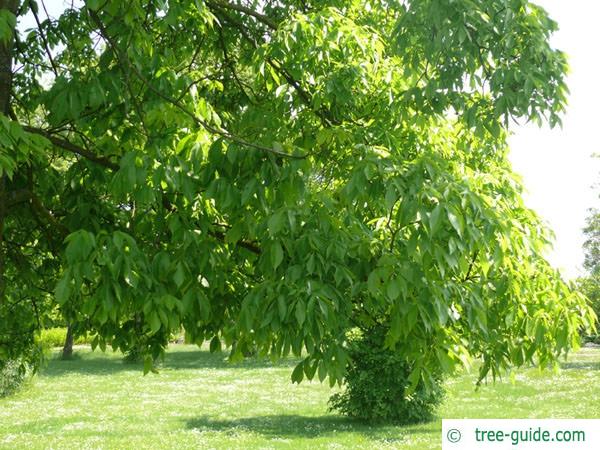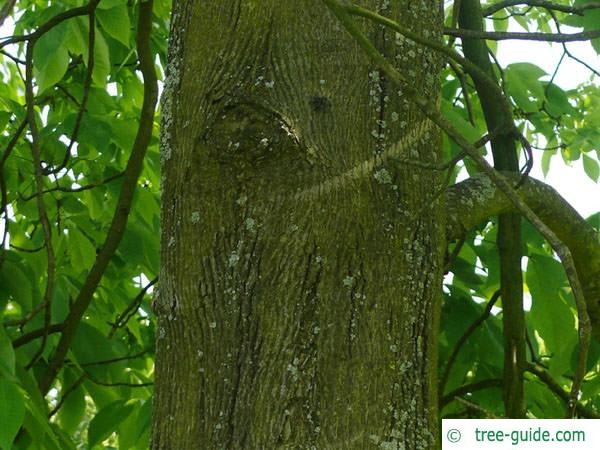Basisdaten
The Shagbark hickory is native to the eastern United States and southeastern of Canada. The deciduous tree can be up to 200 years old. With age the bark dissolves like scales from the tree, hence the name.
Tree profile
The leaves of Shargbark hickory are 30-60 cm (11.8. - 23.6 in) long, are odd-pinnate, with five (rarely three or seven) single leaves. The three upper leaves are significantly greater than the two at the base. The leaf margin is serrated.
The greenish male flowers form out long-stemmed catkins. The female flowers are short stalky.
The stone fruit is 2.5 to 4.0 cm (1 – 1.6 in) long. The fruit is surrounded by a hard green, quartered shell. The core (nut) is edible and is loved by humans and animals alike.
The brown strong branches hang down. The terminal buds are large with loose scales.
single tree in gardens and parks
Carya additional information
overview leaves | overview fruit | overview trunkoverview winter | overview trees







